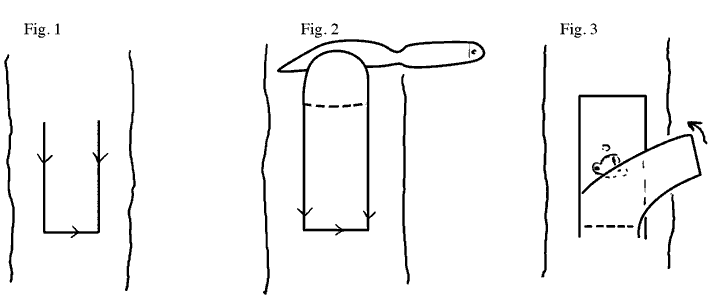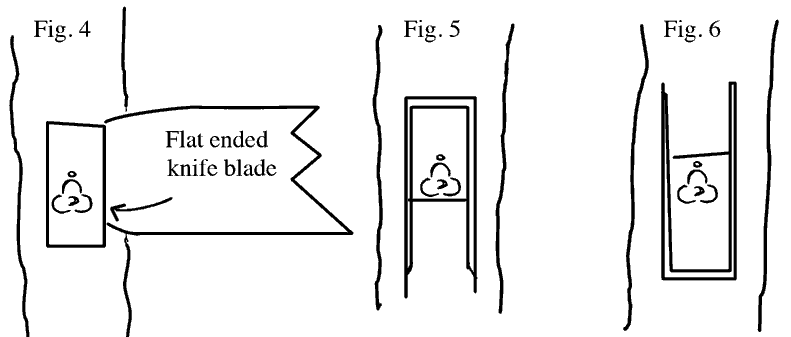
RAMBUTAN CLONAL PROPAGATION METHOD
SCIENTIFIC NAME: Nephelium lappaceum
FAMILY: Sapindaceae
Approach Graft
Standard Modified Forkert Bud Graft
Wedge Graft Modified Forkert Bud Graft
Airlayer Modified Forkert Bud Graft
Cuttings
Season
November to April, but with January to March the best months. Other periods of the year in north Queensland only really applicable if both stock and scions are from a heated environment. Conditions are best when humidity is high and there is very active growth in both stocks and scions.
Approach Graft
This is the easiest method, but most cumbersome, giving 80%-100% success if done well in the correct season.
Can be used to take a scion off the parent tree or off another grafted potted tree, or in reverse to put a scion on to a seedling in the field. Stocks should be vigorous rambutan seedlings, 500 mm to 1 metre high and 10 - 18 months old. They must be in very active growth. Attempt graft with potted stock on the ground or on a bench adjacent to the scion terminal. Regular watering is essential in order not to let stock dry out at any stage. Shade must be provided especially when stocks come from a shaded nursery environment.
Graft in the normal way for the approach method. Stake the scion branch so that it does not move appreciably in the wind. The stock should be preferably slightly thicker than the scion at point of union. At 40 days, ring bark the scion branch below the union, - do not cut into the heart wood. At 60 days cut off the stock above the union. At 70 to 75 days cut the scion below the union and immediately remove the tree to a humid, shaded environment. For added insurance put a clear polythene bag over the tree and tie below the union. Keep this on the tree for 7 to 14 days.
Operations can be reduced to 30, 45 and 60 days if the stock remains in very vigorous growth. However they may have to be increased to 50, 70 and 90 days if the stock is not vigorous.
After the tree has completed 1 to 2 growth flushes or 150 mm of new growth in the nursery, the polythene tie may be removed. Paint the union with a mixture of copper oxide and hydrated lime. Do not attempt to tidy up the graft stubs until at least 6 months after grafting.
Standard Modified Forkert Bud Graft
Stocks must be at least 10 mm in diameter at 100 mm above the soil level - either in the pot or bag or in the field nursery.
Scion wood should be at least 10 mm in diameter and from vigorous straight growths on the scion tree which are at least 12 to 18 months old. If leaves are persistent, cut these off the scion branch 7 to 14 days before grafting. Buds should be dormant, preferably flat and the rind easily separable.
Cut a flap on the stock (hinged at the top or bottom) approximately 8 to 12 mm wide by 40 mm long (Fig. 1). Cut a similar flap on the scion (with the bud centred in it) but leave the top horizontal (Fig. 2). The commence a downward cut on the scion starting 10 to 20 mm above the patch and cutting into the heart wood down to half the length of the patch. Then separate the rind by pulling down. When the patch is removed, cut the top horizontal end.

Take care to ensure that the eye is not pulled out of the bud. Insert the scion patch under the stock flap. It is desirable but not essential that the vertical edges of the scion patch match the stock. The patch area is then tied over with tape - the flap may be left to entirely cover the bud or the top half removed so as to cover just up to the bud, but not over it. Prominent buds may be tied around and not over completely.
At 21 to 30 days the tape may be removed and the bud inspected. If failed, the stock should be re-budded on the opposite side. If successful, the bud is left for another 7 days and then the stock decapitated 150 mm above the bud. Alternatively, a cut can be made into the stock starting 50 mm above the bud and upwards for 70 to 100 mm so that it terminates half way through the stock. The stock is later headed back to 50 - 75 mm above the bud when the scion bud has completed one growth flush. Cut the remaining stub when the scion growth reaches 300 mm plus.
Greenbud Modified Forkert Bud Graft
This method is practised only in the Philippines and may be useful for early season grafting. Stocks can be slightly smaller than used in the Standard Modified Forkert Bud Graft. Scion wood can be relatively young material with pronounced petiole bases.
The patch on the stock is prepared in the normal way. However, the scion branch is defoliated at the time of grafting and the petiole cut close to the base. The scion patch is cut on four sides to match the stock patch. The bud patch is lifted off the stick with a flat-ended knife (Fig. 4).
If the eye of the bud is retained the scion patch placed on the stock in the normal way - but the stock flap is cut (either top or bottom hinged) so as not to cover the actual bud eye (Figs. 5 and 6).
The patch is then tied over with tape. At 21 to 30 days the tie is removed and if the bud is dead the stock should be rebudded on the opposite side. If viable the bud is retied for a further 7 days. Then, the tape again removed and the stock cut half way through in a long sloping cut of 75 to 100 mm starting 50 mm above the bud. Subsequent procedures are similar as for the Standard Modified Forkert.
Wedge Graft
This method is not very commonly used with rambutan. Stocks should be at least 400 mm high. The stock is decapitated at or above 300 mm - retaining at least 4 green leaves below. This scion should be a terminal - having hardened off after a flush of growth. All leaves must be removed by cutting at the base of the petiole. The stock is slit down the centre, or toward one side if the scion diameter does not match. The scion is shaped to a standard wedge. The cut surfaces on the scion must be very straight and cambial contact with the stock lined up very precisely.
The union is tied with tape, then the whole scion is bound with tape or covered with a polythene bag and tied below the union. The tape or bag over the scion is removed when growth commences.
Air Layers
This method is now not very common due to death of cinctured branches, or mortalities after potting up. Percentage success is much less than with litchis. Branches selected should be 500 mm to 800 mm long above the point of cincture. Roots appear through the peat ball after 6 to 12 weeks. After detaching, place the potted air layer under mist or at least enclose the leaves with a polythene bag in the shade.
Cuttings
Rambutans have not commonly been grown from cuttings. However it may well be a commercial method when fully investigated. Limited evidence suggests that branches should be cinctured and left on the parent tree for 2 to 3 months. Cuttings of 300 to 400 mm can then be taken (with leaves attached) and placed under mist with bottom heat. Rooting hormones may also assist.

DATE: March 1982
* * * * * * * * * * * * *
